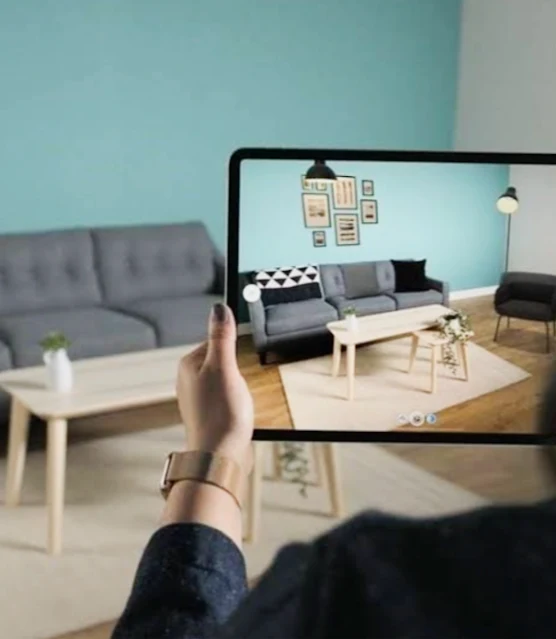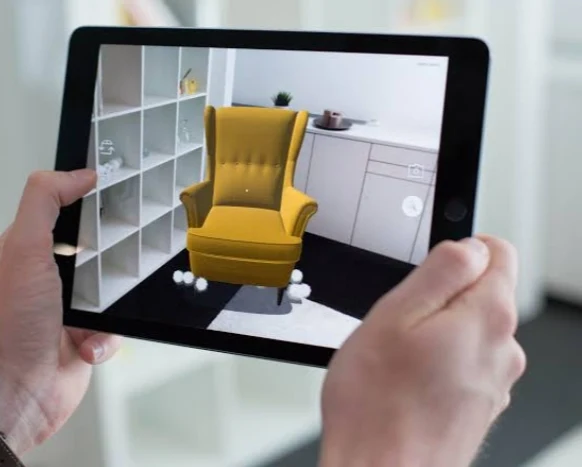IKEA Place: Revolutionizing Furniture Shopping with Augmented Reality
IKEA Place is a mobile application that utilizes augmented reality (AR) technology to transform the furniture shopping experience. Launched in 2017, the app allows users to virtually place IKEA products in their own homes, enabling them to visualize scale, style, and functionality before making a purchase.
Benefits of IKEA Place
| Feature | Advantage |
|---|---|
| AR Product Placement | See true-to-scale 3D models of IKEA furniture in your living space. |
| Improved Decision Making | Visualize how furniture will look and fit within your room's dimensions, reducing the risk of buying unsuitable pieces. |
| Enhanced Planning | Experiment with different furniture arrangements and layouts to optimize your space. |
| Streamlined Shopping | Save favorite furniture items within the app and easily access product information or purchase directly. |
How IKEA Place Works
-
Download the App: IKEA Place is available for free on both iOS and Android devices.
-
Scan Your Room: The app uses your device's camera to scan your room, creating a digital map of the space.
-
Browse and Place Furniture: Select furniture items from the IKEA catalog and virtually place them in your scanned room.
-
Interact and Refine: Move, rotate, and resize furniture models to find the perfect placement and configuration.
-
Save and Share: Capture screenshots or videos of your virtual furniture arrangements to share with friends, family, or an interior designer for feedback.
IKEA Place: A Game Changer for Furniture Shopping
By leveraging AR technology, IKEA Place empowers customers to make informed decisions about furniture purchases. The ability to virtually visualize furniture in their own homes reduces the risk of impulse buys and ensures a better fit for their space. This innovative app is a valuable tool for anyone looking to enhance their home décor and create a functional and stylish living environment.
IKEA Place: Unveiling the Tech Toolkit Behind Your AR Furniture Shopping
IKEA Place has become a game-changer in furniture shopping, letting you virtually place furniture in your own space using augmented reality (AR). This innovative app goes beyond the limitations of traditional furniture browsing, but what specific technologies power this magic?
Let's delve into the tech toolbox behind IKEA Place:
Core Technologies
-
Apple's ARKit (iOS) & Google's ARCore (Android): These software development frameworks (SDKs) are the foundation for building AR experiences. They provide the tools for the app to understand the real world through your phone's camera and overlay digital elements like 3D furniture models.
-
Motion Tracking & Sensor Fusion: Your phone's gyroscope and accelerometer work together with ARKit or ARCore to track the movement and orientation of your device in space. This allows the app to understand how you're holding your phone and moving around the room, ensuring the virtual furniture models stay anchored and move realistically as you explore your space.
-
Plane Detection: ARKit and ARCore can detect flat surfaces in your environment, like floors and walls. This allows IKEA Place to create a virtual "floor plane" within your room, ensuring the furniture models are placed realistically on these surfaces.
-
High-Quality 3D Modeling: IKEA Place utilizes meticulously crafted 3D models of their furniture. These models are built using computer-aided design (CAD) software and often include photogrammetry techniques to capture the exact textures and details of the real furniture.
Advanced Technologies (may not be available in all versions)
-
LiDAR Sensors (if your device has one): Some high-end phones include LiDAR sensors, which can create more detailed depth maps of your environment. This allows for more precise placement of furniture, especially when dealing with uneven surfaces or objects with complex shapes.
-
Object Recognition: IKEA Place might utilize object recognition to identify existing furniture in your room. By recognizing existing objects, the app can account for their size and position, leading to a more accurate placement of virtual furniture.
-
Lighting Simulation (advanced versions): Some versions of IKEA Place might use lighting estimation techniques to simulate how light interacts with the virtual furniture. This can provide a more realistic visualization of how the furniture would look with your existing lighting conditions.
The Future of IKEA Place
The developers of IKEA Place are constantly pushing boundaries. Here's what we might see in the future:
-
Improved Spatial Mapping: Creating even more detailed and accurate digital representations of your room using technologies like Simultaneous Localization and Mapping (SLAM).
-
Interactive Features: The ability to virtually interact with the furniture, such as opening drawers or sitting on chairs, for a more immersive experience.
-
Integration with Smart Home Systems: Future integration with smart home systems could allow for control of lighting or other aspects of your environment to further enhance the furniture visualization.
By leveraging this powerful tech stack, IKEA Place continues to transform furniture shopping into a more informed, convenient, and engaging experience.
Technology Used in IKEA Place
| Core Technology | Function |
|---|---|
| Apple's ARKit (iOS) & Google's ARCore (Android) | These software development frameworks (SDKs) form the foundation for building AR experiences. They allow the app to understand the real world through your phone's camera and overlay digital elements like 3D furniture models. |
| Motion Tracking & Sensor Fusion | The phone's gyroscope and accelerometer work together with ARKit or ARCore to track the movement and orientation of your device in space. This ensures the virtual furniture models stay anchored and move realistically as you explore your space. |
| Plane Detection | ARKit and ARCore can detect flat surfaces in your environment, like floors and walls. This allows IKEA Place to create a virtual "floor plane" within your room, ensuring the furniture models are placed realistically on these surfaces. |
| High-Quality 3D Modeling | IKEA Place utilizes meticulously crafted 3D models of their furniture. These models are built using computer-aided design (CAD) software and often include photogrammetry techniques to capture the exact textures and details of the real furniture. |
| Advanced Technology (may not be available in all versions) | Function |
|---|---|
| LiDAR Sensors (if your device has one) | Some high-end phones include LiDAR sensors, which can create more detailed depth maps of your environment. This allows for more precise placement of furniture. |
| Object Recognition | IKEA Place might utilize object recognition to identify existing furniture in your room. By recognizing existing objects, the app can account for their size and position, leading to a more accurate placement of virtual furniture. |
| Lighting Simulation (advanced versions) | Some versions of IKEA Place might use lighting estimation techniques to simulate how light interacts with the virtual furniture. This can provide a more realistic visualization of how the furniture would look with your existing lighting conditions. |


